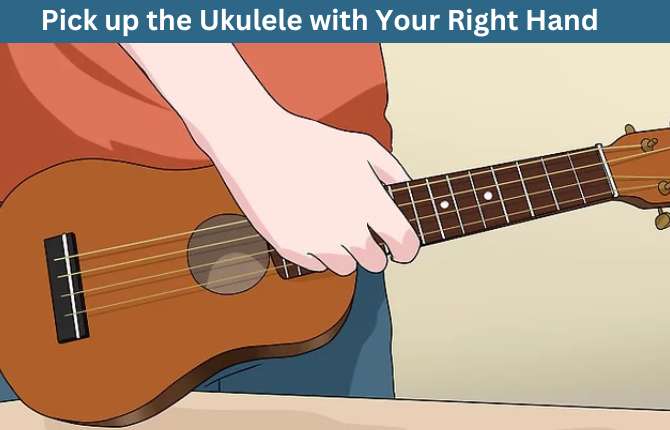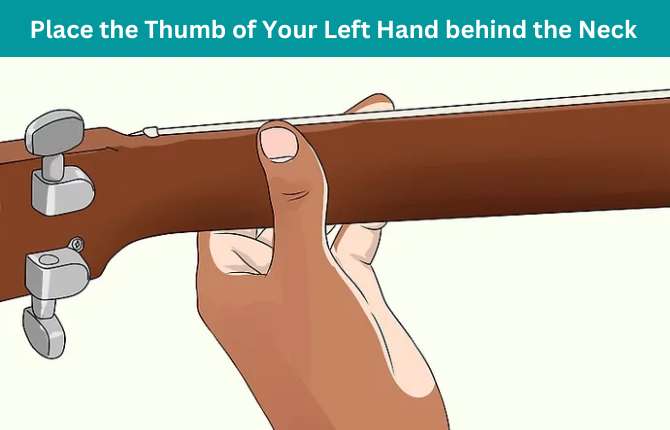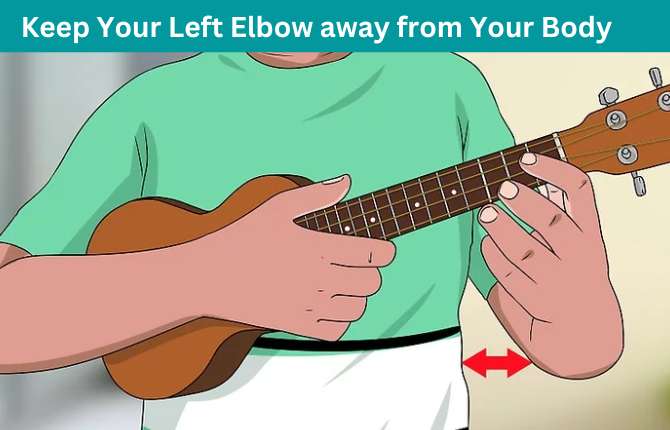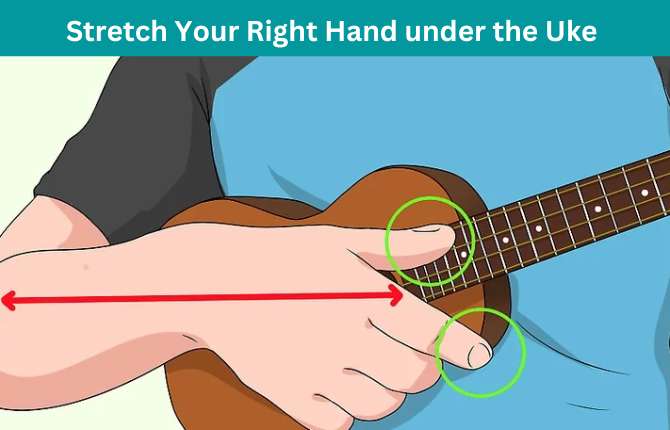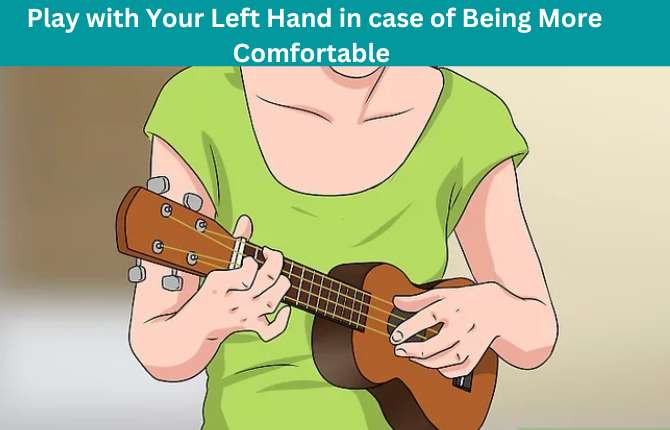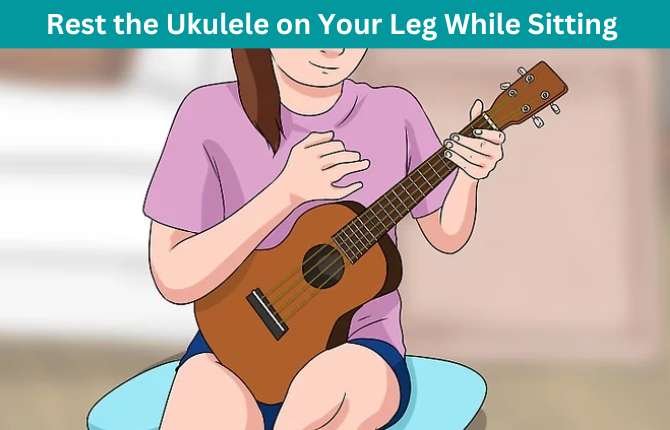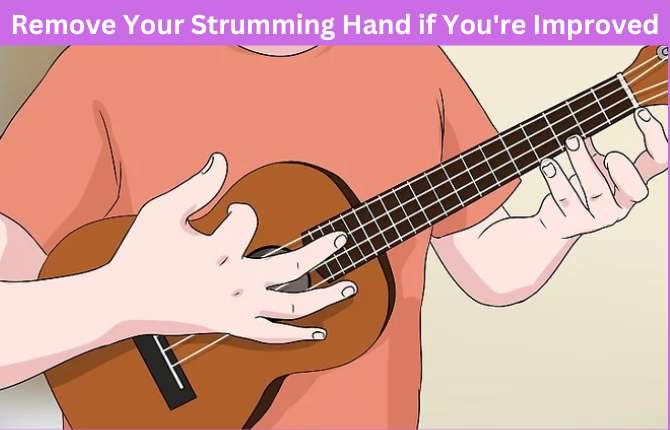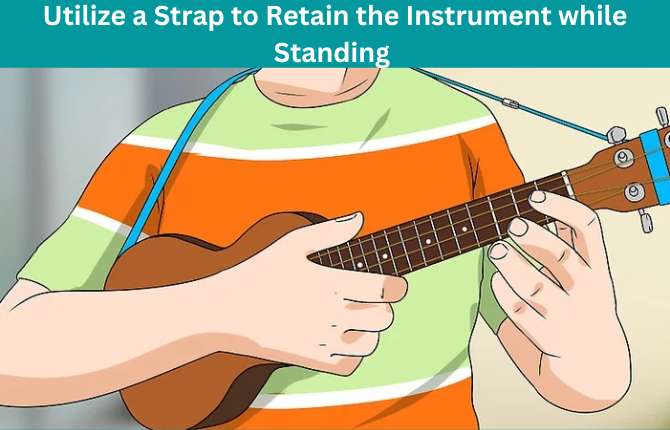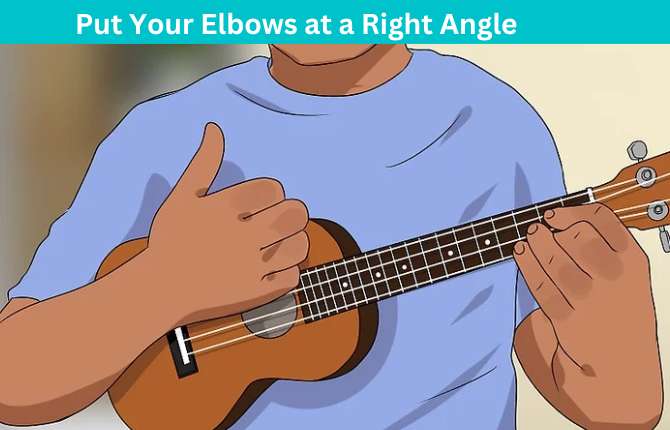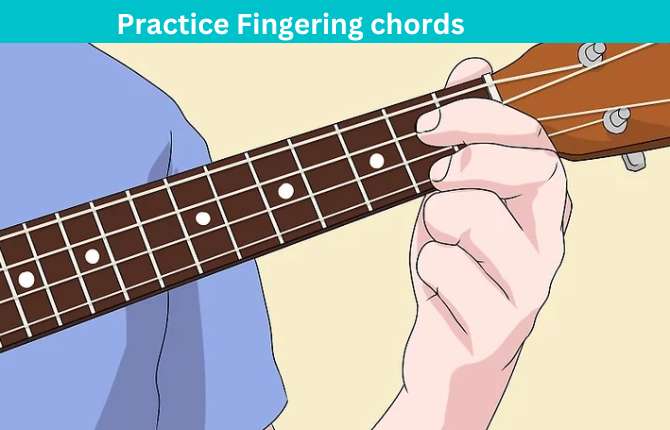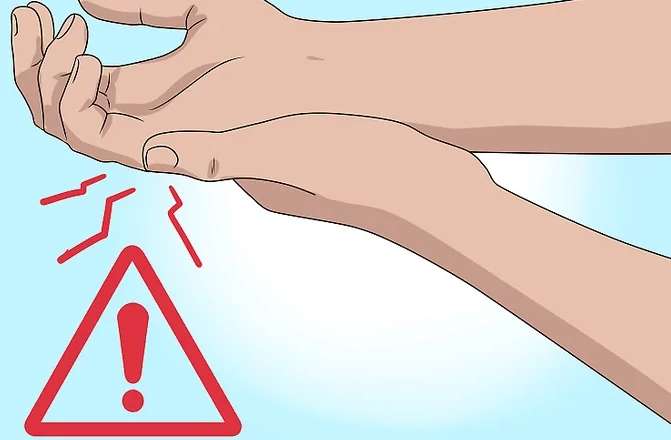
Learning a ukulele is straightforward because it’s joyful and small in size. But before going on to play, players must master how to hold a ukulele.
Support the uke by hugging the body, but not by gripping the neck. Top of all, the most significant thing should be that it’ll be comfortable for you! You always organize the hold so that it can fit your needs.
We’ve mentioned several methods to make your hold simple. Therefore, you can follow the procedures below:
Method One: Using a Traditional Position To Hold a Ukulele
First, look at the conventional method how to hold a uke:
1. Picking up the ukulele with your right hand
Where the neck coincides with the body, it’s an excellent place to hold the ukulele. Twist your right hand around the front of the instrument to grip it.
For newbies, the right hand is the hand you’ll play the strings with, irrespective of what hand is considered your dominant hand.
2. Pressing the ukulele to your chest
If it seems uncomfortable, attempt moving the instrument up or down a bit. It should remain parallel to the ground, even though the neck might be held at a little angle.
3. Cradling the body of the ukulele with your right arm
At a 90-degree angle, you put your elbows. The last of the ukulele needs to squeeze against your arm. Grasp the instrument somewhat tightly if it slides. But never grip the uke too tightly. You require sufficient pressure to put the ukulele in place.
Grasp the instrument between the body and neck till your left hand remains in place.
4. Placing the thumb of your left hand behind the neck
Place it between the 3rd fret and the nut (or top of the fret). Enwrap the remaining of your fingers around the onward of the neck so your fingers can remain parallel to the frets. Let the fingers keep floating above the frets. Merely, your fingertips ought to come into touch with the neck.
The left hand ought not to retain the ukulele weight. Don’t grip the neck. A lighter touch will allow you to stir your fingers up and down more freely.
5. Keeping your left elbow away from your body
Don’t stick it or squeeze it against your side. Instead, put it several inches away from your body. A straight line should go from your elbow through your wrist.
Stay your wrists upright as you grip the uke. You might need to bend your wrist for some rugged chords, but the wrist will remain upright in most cases.
6. Stretching your right hand under the uke
Place your wrists upright, but allow your fingers to cup under the instrument. You may utilize your thumb or index finger.
A few people shake off over the soundhole while others play between the body and neck. Whatever way you pick, ensure your hands can snugly reach it.
Method Two: Using Variations To Hold A Ukulele
Now, see the 2nd way to hold a ukulele below:
1. Playing with your left hand in case of being more comfortable
You can use your left hand to play the ukulele, although most people use their right hand for a uke. With your left hand, you grasp and strum the uke in this case.
Remember that most instrument guidebooks are available for right-handed players. Therefore, you might need to reverse any guides you utilize.
If you don’t always wish to make reverse playing directions, you can give your uke rest so that the G-string becomes the top string whenever you grasp the uke using your left hand.
2. Resting the ukulele on your leg while sitting
You turn your instrument to play in this position so that the neck is gripped at an angle. If you play a big uke or are a newbie, it can assist you.
3. Removing your strumming hand if you’re improved
You might no longer need to hold the ukulele down and support it after a while. Instead of it, entirely retain the instrument with your arm. To strum, float your wrist over the sound hole because it’ll provide more movement.
If you fail to hold the instrument in this way, except for sliding it, you might not be ready to attempt it.
4. Utilizing a strap to retain the instrument while standing
A strap lets the instrument hold in place so you can play more easily. You may take an adjustable guitar strap or a ukulele strap. You’ll find them at stores and online.
But when you play the instrument in a sitting position, you won’t usually require a strap.
Method Three: Checking Your Position to hold a ukulele
Finally, you see the last method below:
1. Moving one hand away to see if the instrument is in place
Attempt it with your fretting hand first and then your strumming hand. To do it, you need to take a seat on a chair. If your instrument slides, you have to grasp it tightly. If it remains on hold, you have retained it correctly.
Always keep at least one hand on the instrument. Release merely one hand at a time.
2. Putting your elbows at a right angle
If the instrument begins to slide, try out your elbow position to observe whether the elbow is causing the problem. At a 90-degree angle, your strumming elbow should always remain. Get off your elbow press too close to your body.
3. Practicing fingering chords
While grasping the ukulele, you should have the capability of reaching all the chords with comfort. Attempt to play some simple chords. If your hands become tired after a while or the tone is muted, you have held the neck too tightly.
You don’t need to extend or strain to arrive at a chord. You need to adjust where to put your hands on the neck or body of the instrument if you are required to do it.
4. Take a rest if you begin cramping
If your hand, arm, or wrist feels to get ache after a few hours, you might be overstressed. Test whether your wrist remains upright. Lay the instrument down to aid you in releasing any stress in your shoulders, arms, or neck.
If you start to experience any aches or discomfort, your body is attempting to tell you something! If you can’t grip the instrument correctly, you can create wrist stress. Therefore, it’s better to adjust your position if you perceive tension, pain, or discomfort.
Conclusion: How to hold a ukulele properly
We hope this guide has provided better insight into how to hold an instrument properly. We recommend you follow the lesson step-by-step so that you can benefit.
Read also:
